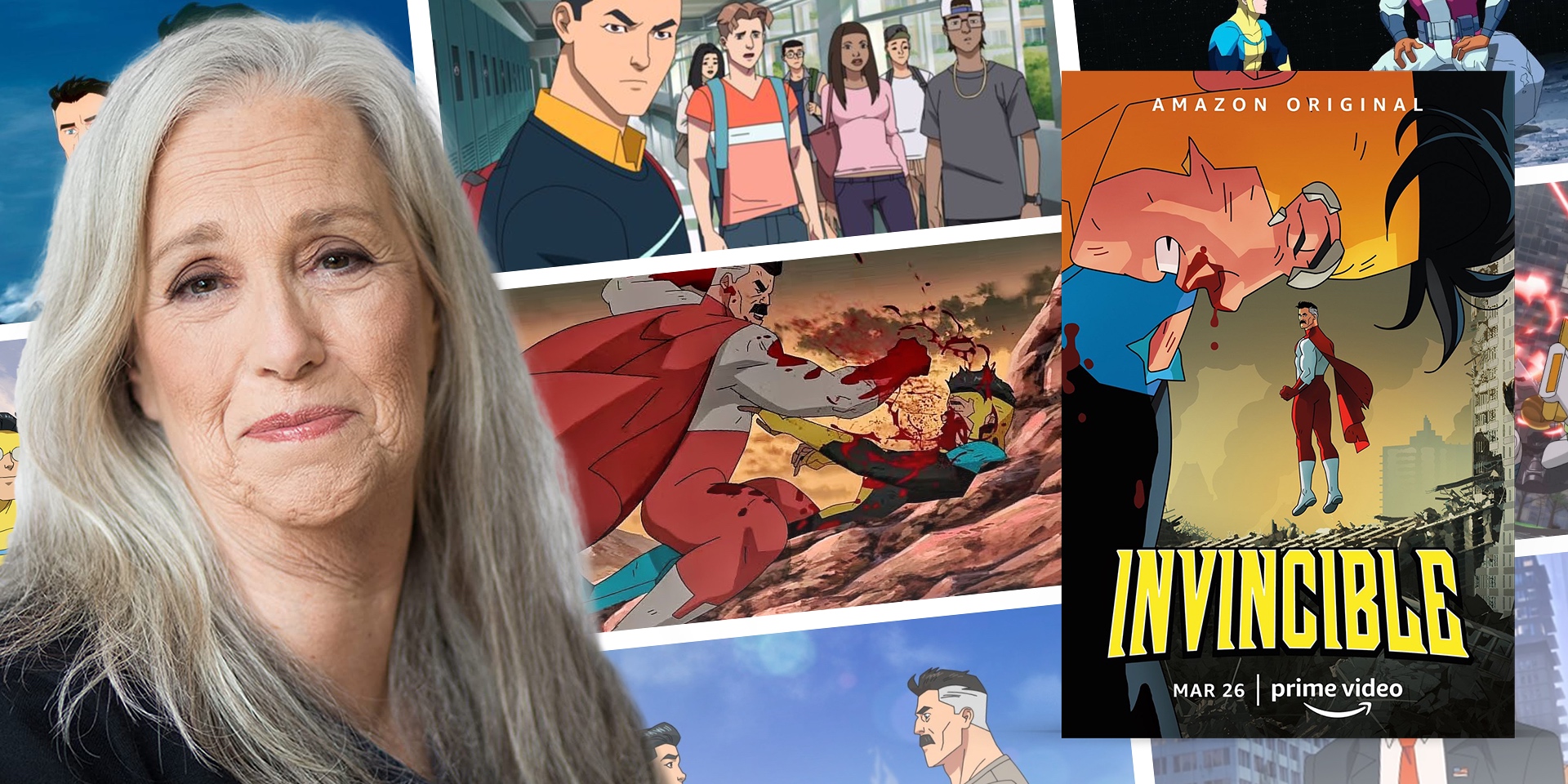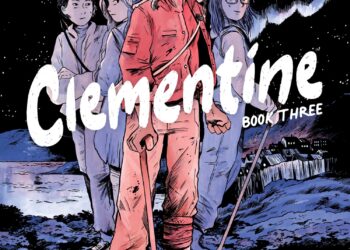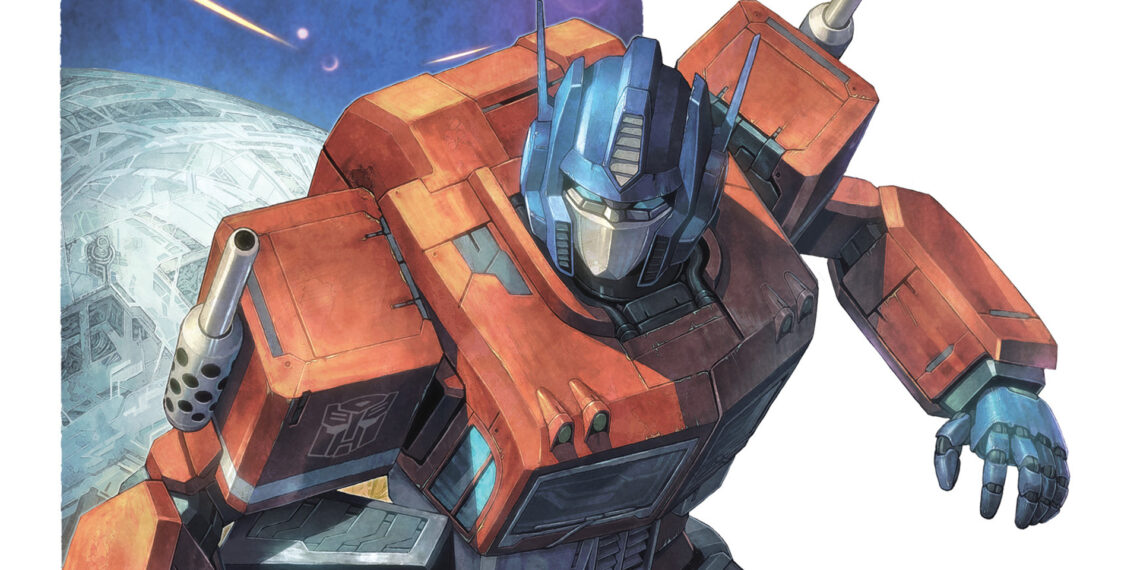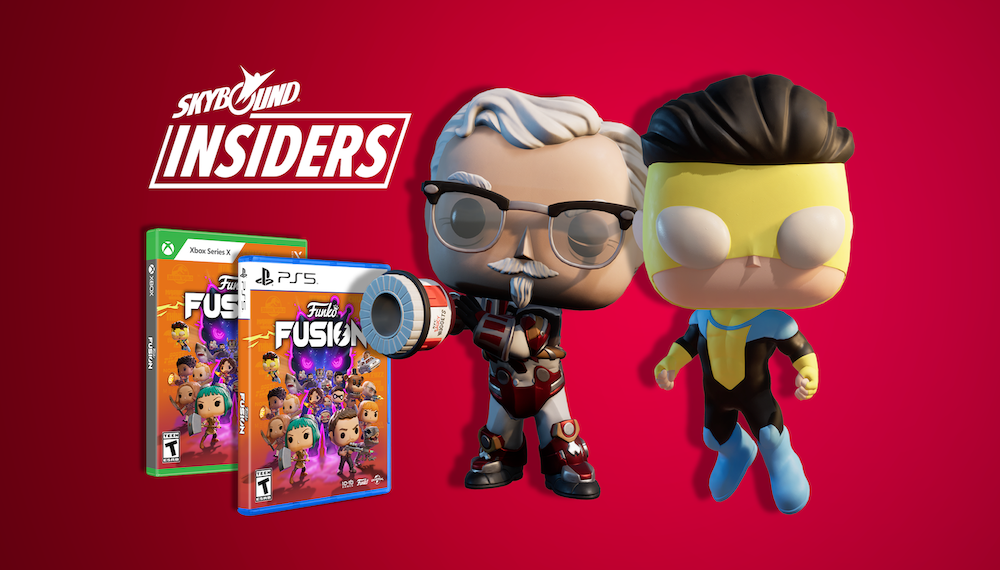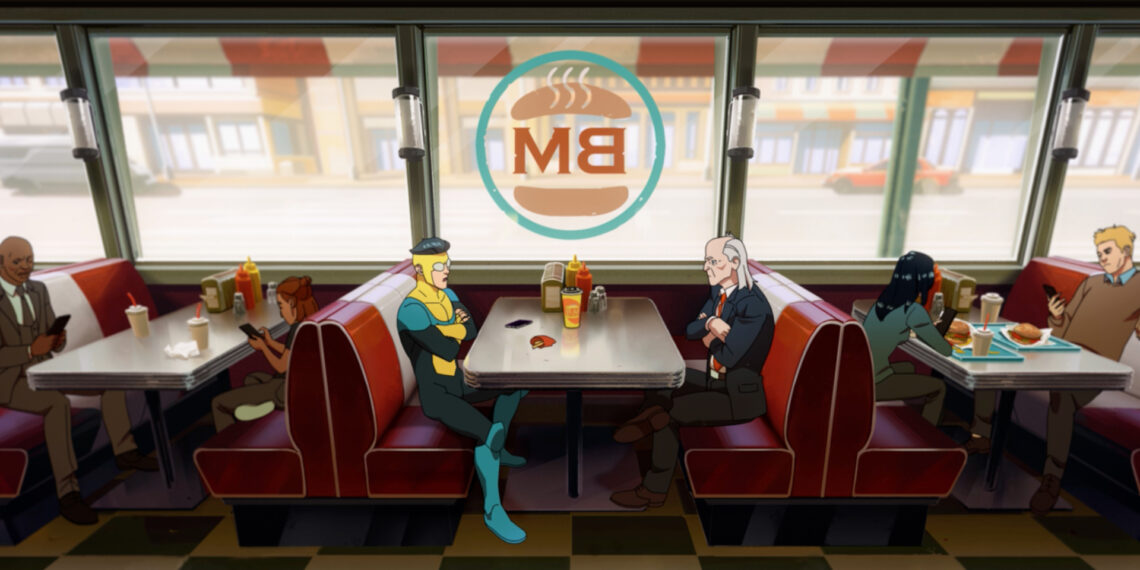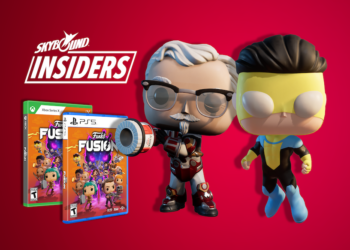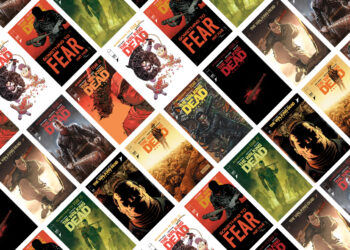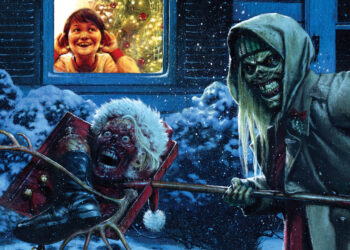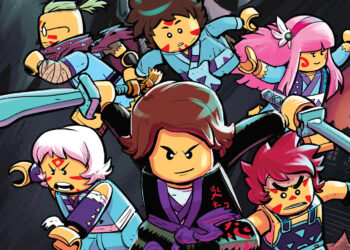Emmy Award-winning Marge Dean is a true legend in the field of animation, having managed and/or supervised everything from The Ren & Stimpy Show to Justice League to Robot Chicken. She’s currently the head of Skybound’s animation studio, where she oversees the smash hit Invincible. As part of our ongoing series of interviews celebrating Women’s History Month, we recently chatted with Marge about her epic career. As well as what fans can expect from Invincible seasons 2 and 3! Here’s what she had to tell us…
How did you begin your career in animation? What attracted you to the field?
I started in visual arts. I did experimental film and video. I was studying down at UC San Diego, in the art department. It was a long time ago, and it was very oriented towards conceptual art. After I did that, I got married and I had a couple of kids.
I started to realize that I was pretty unemployable. The only thing you could do with an MFA in visual arts was teach, and I didn’t really want to do that. So I started thinking. One of the things I didn’t like about the art world was how limited the audience was, and it was a very elite audience. I wanted to reach a lot of people, and regular people, not just rich people. That’s when I started thinking about more popular media.
I knew that I was pretty good at managing things. I also seemed to be pretty good at writing grants and getting money. And I had started teaching animation. I moved to Alabama when I got married because my husband was in medical school there. I was working at the Alabama Filmmakers Co-op and that’s where I started to really teach animation more. It was experimental, but we called it animation. I wasn’t teaching them to draw or anything like that. It was object animation, how to animate their toys, animate themselves, that kind of stuff. It was very fun.
Then we moved back to California. I realized that I really wanted to try to figure out how to get into mainstream media and make big films. All that kind of stuff. I thought, “Well, a producer does that. I think. I don’t really know what a producer does, but I think that’s what they do.” So I found out about the producers program at UCLA. Because I had two small children at that point, it would’ve been very hard on everybody. I already had an MFA, so I thought, “I’m only gonna do this if I get into either UCLA or USC. Otherwise, it’s not worth doing.”
I applied to UCLA, and I did not get in. I thought, “OK, it’s a crazy, crazy idea. I shouldn’t be doing this. I got two babies and I just need to be a mom.” Then about three or four months later, I got a phone call from Howard Suber at UCLA, saying, “The reason you didn’t get into the program was because we canceled it. But we are going to do it. I’m gonna facilitate it. I’m gonna be the chair of it, and I want you to be in the first class that I have.”
So it was great. I was very honored, and I went to UCLA, and I went to the producers program and got a crash course in how the industry works. While doing that, one of my colleagues said, “You should produce animation.” I was a little offended at the time, because I thought, “Why should I do animation? Why can’t I do big fancy movies just like the rest of you guys?” But she planted a seed.
So I was at the Telluride Film Festival. Frank Marshall was there and Kathleen Kennedy from Amblin. I was part of a student group, and they were speaking to the group. I raised my hand and asked, “What do you think makes a good producer?”
They got very animated talking about it and were really excited about answering the question. So afterwards I went up and I was going to talk to Frank Marshall, and ask him one more question. I was on this mission. I didn’t really understand what I was doing, but I came face to face with him. I still didn’t know what I was gonna ask him. Then out of my mouth popped, “So what do you think about producing animation?”
He said, “Oh my God, animation is the future. We just did Roger Rabbit…” He got very excited about it and then said, “Are you in LA? Great. Call my office.” So I had my Hollywood moment, and it was all around animation… I called him, he didn’t answer. I called him again, he didn’t answer. So I sent him a fax with my resume. I said, “Look, I’m a student. I know you’re way too busy to call me back. But I can work for free. I just want somebody to open the door for me.”
The next day somebody called me and I got an internship on Family Dog. I realized I’d found my spot; I’d found my people. I got along with everybody, and I understood intuitively what the production pipeline was. Because I was an experimental filmmaker, I knew how it all worked. So I made ties and connections.
I did finish my degree. But right as I finished my degree, Nickelodeon fired John K off of Ren & Stimpy and set up a new team. Because I was friends with the producer from Family Dog, I was able to get a job on Ren & Stimpy. That was the start of it, and I just kept moving through production management.
Other people can sing. I can manage time and money. I don’t know what it is. So I just kept moving up. I started as a PA. Within 18 months, I was the production manager on Ren & Stimpy. When that wrapped, I worked on shows like Street Sharks and Where on Earth is Carmen San Diego? I learned how to do down and dirty production. Ren & Stimpy was all about the artists and the art, and the jokes and the high-quality animation. It was really good learning for me to go from one to the other because now I could do both. Then I just moved through the pipeline.
Over the years, I moved around a fair amount. I’ve worked in lots of different places, usually four or five years at a time. But I’m glad that I did that because I have a huge network now, because I’ve worked with so many people and I’ve also seen how different companies do it. So I have a lot of knowledge stored up and experience stored up about pipelines and how they work, and what does work, what doesn’t work, what are the red flags, what are the potholes. So it enables me to be good at my job.
What do you look for in an animation project?
The thing that keeps my interest is… If you look at my experience, I had the basis of 2D animation, traditional 2D animation. It’s what I did for at least the first ten years of my career. Then once digital animation started to really come into play, we moved away from doing cells to doing digital paint. Then Flash came in and people started using Flash as a tool. Then eventually Harmony came in and that became a thing. CG, 3D animation. I’ve always been involved in those things; I’ve always been an early adopter of that stuff.
When I was at Sony we did Roughnecks: Starship Troopers Chronicles, which was one of the first and I think best CG-animated sci-fi series. At that point, with where the industry was and technology was, it was really heads above, quality-wise, most of the other stuff that was available. We went on a total limb of trying to figure out how to do it, and eventually we did. It wasn’t immediately a hit, but it ended up having a really big fan base and Sony made a lot of money on the DVD sales.
Also, when I was at Sony, Sony was trying to do essentially what was the precursor to streaming. At the time, everybody was dial-up. So it didn’t work very well, because it took too long to get stuff. But they were using Flash to do little bits and pieces, little animated clips. We used Flash to produce a series of shorts for this streaming platform that Sony had built.
When I got to Warner Brothers, there was a show designed to be done in Flash. They wanted to ship it off to somebody. I was like, “Why? We can do it.” So I love trying to figure things out – “This is the traditional way of doing it. But if we could use a digital tool to work, what would that look like?”
Along the way, I really have done all kinds of animation. Like I’ve done 2D, I’ve done digital 2D. I spent three years at Stoopid Buddies producing Robot Chicken. I’ve done all this series stop-motion work. Then I shifted over to Crunchyroll, and I was doing anime and working in Japan. So it’s the production challenges, trying something new each time. Now, being able to work on Invincible and do hour-long adult dramas… Invincible is really the first show that’s ever been that, and I think there’ll be many more. But I’m determined to figure out a really efficient pipeline for hour-long dramas, high-profile hour-long dramas.

Why do you think Invincible is such a big hit?
I think it’s because there’s this whole generation, the millennials and then the Gen Zs behind them, that grew up with 24/7 access to animation. This is the generation that grew up on Nickelodeon, Cartoon Network. When I was growing up, or even the Gen X folks were growing up, it was afternoon cartoons or Saturday morning cartoons or early morning cartoons. But it was never animation anytime you want it.
What that’s done has created a whole fan base of people who are totally happy to see any story being told in animation. It’s not limited in their minds. It’s not limited to just comedy or just kids shows. Then on top of that, the popularity of anime is just exploding. It’s beyond exploding. I don’t know the actual statistics, but I would venture to say it’s the most popular form of animation in the world right now. Everybody aspires to that level and that look and that feel and authenticity. That beautiful cinematic work that happens in anime.
All of that is very sophisticated storytelling and sophisticated filmmaking. The same generation, not only have they had 24/7 animation available to them, but they’ve been exposed to anime at a level that the previous generations were not. If we could get a bootleg DVD, maybe we’d be lucky enough to watch something, you know?
Whereas these guys… When Toonami came on, they started being able to watch some of the best anime coming out of Japan, and they started getting that taste for sophisticated, mature stories being told in an animated format. They said, “Yeah, why not? I love animation, I love watching this. Why not tell me grownup stories?”
Then just the love of genre is the other thing. It’s replacing the sort of day-in-the-life, ordinary storytelling. Having that layer of genre on the content is becoming more and more critical for the new adult audience that are the buyers.
Right now you’re deep into production on Invincible seasons 2 and 3. Can you say how they may differ from season 1?
Well, one big difference between season 1 and season 2, and this is technical stuff… There’s a lot of CG in season 1, and we chose to go almost purely with traditional 2D. There are some CG elements, there are some vehicles, and we do use computer programs to build some of our sets, our backgrounds. But for the most part, the work being done in Korea is traditional hand-drawn animation. I think it will have a slightly different feel then season 1 did.
As far as the story… If you are a fan and you’ve read the comics, it’s the cycle of stuff that happens. We are being true to the comics. Robert [Kirkman] is really emphatic that we reference the comics. I think we might be doing that a little bit more than they did on season 1. And Robert’s really, really involved in Invincible seasons 2 and 3. He was involved in season 1, but this time he’s really invested in this. So we are getting a lot of his attention. Which is great. I mean, his attention always makes everything better.
One of the things that’s great about the show is the quality of the voice cast. How did that happen? I’m hard pressed to think of an animated show with a cast this strong across the board.
I think that’s Robert and The Walking Dead. I mean, if you look at many of the actors, many of them are from The Walking Dead. I just think these are people that he knows. So a lot of it’s really driven by him. When they were doing season 1, it was probably more about him. Maybe now on seasons 2 and 3… Season 1 was such a hit that people are really interested. People like to be on hit shows. So it’s a little bit easier to get people to say yes.
One last question… What advice would you give to a young woman considering a career in your field?
That question’s very important to me. I am president of Women in Animation. So I’ve been working for the last ten years on gender parity, and trying to open doors for women to get into the animation industry. To be able to break through the glass ceiling.
I think first I would say try to be clear about where you want to be in the industry. Because going into animation is broad. There are so many different jobs in animation. You could be a lawyer in animation or a production accountant and be in animation. You could be in production management, you could be an artist, you could be a writer, you could be a composer.
So, if you’re interested in animation, figure out where you fit in there. First and foremost, I would say join Women in Animation. Start meeting people and build your network and participate in the mentorship program. Because that is the only way that people are successful in this industry. No matter who you are — man, woman, it doesn’t matter — you’re going to advance based on the strength of your talent, but it’s really based on the strength of your network of peers.
You don’t have to know somebody who’s already established. It helps somewhat. But the important things are the people around you who are at the same level that you are and that you all work together to move up through the industry.
If you’re interested in being an artist in animation, first and foremost, just don’t stop drawing. Just draw, draw, draw. Even if you end up in color or painting or something else, the more you draw, the stronger you get. Your instincts become stronger. It just doesn’t end, the benefits of becoming a master draftsperson.




